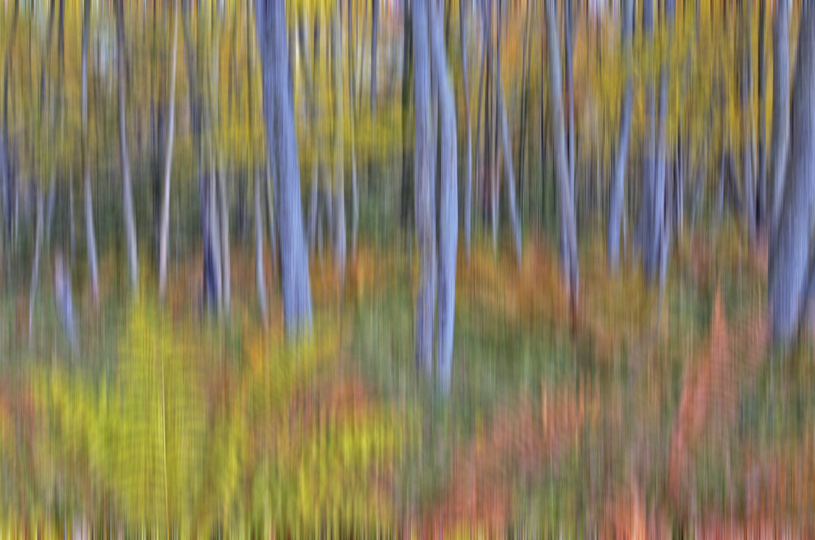Hello all, and happy weekend! Were you one of the ones who sent in a guess about last week’s puzzler? Have you seen these “balls” on the forest floor and wondered what they were?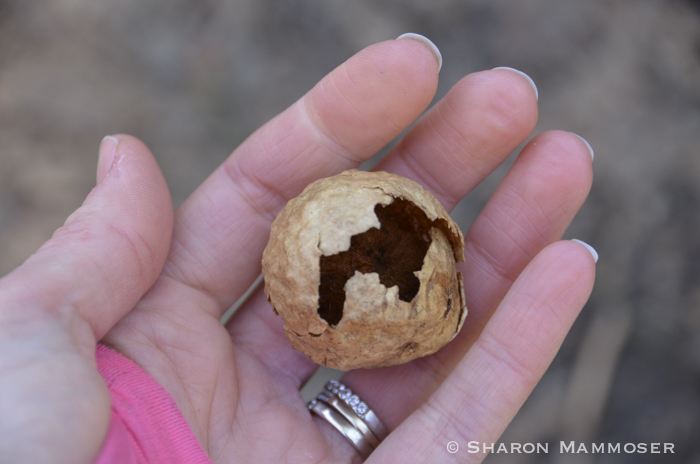
One subscriber said her grandson thought they were some kind of egg sac–while this guess is not correct, it is easy to see from this picture below that they DO resemble the egg sacs of some spiders, especially some of our bigger spiders.
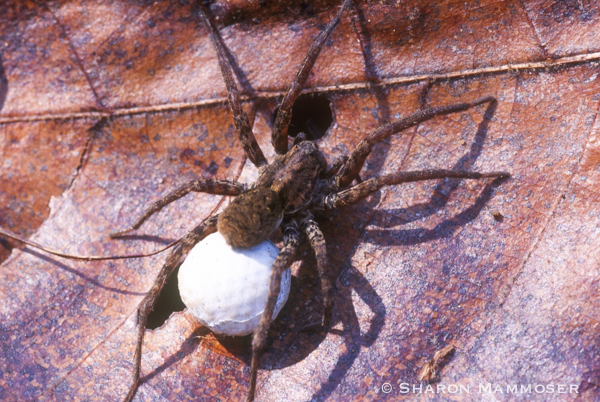
So no, the “ball” isn’t from a spider. It is actually called a gall–specifically, an oak apple gall. And it was made by an insect called–appropriately, an oak apple gall wasp— Amphibolips confluenta.
At least one subscriber KNEW that it was a gall, but then had no idea what a gall is. Given the variety of galls and how they’re created, this isn’t hard to understand!
A gall is an abnormal growth formed on plants and trees in response to the presence of insects, mites, nematodes (parasitic worms), bacteria or fungi. Most are made by wasps–amazingly, there are 1300 species of wasps that create galls! Galls can be found on any part of the plant–leaves, flowers, buds, twigs, under the bark and even on the roots. Galls are made up completely of plant tissue but it is the insect and its chemicals that determine the shape of the gall.
There are more than 2000 different kinds of galls–each caused by a different kind of critter. Here are some other galls you may have seen while you were out and about in the woods or your yard. I wrote about one that grows on goldenrod a while back–you can read about it HERE.
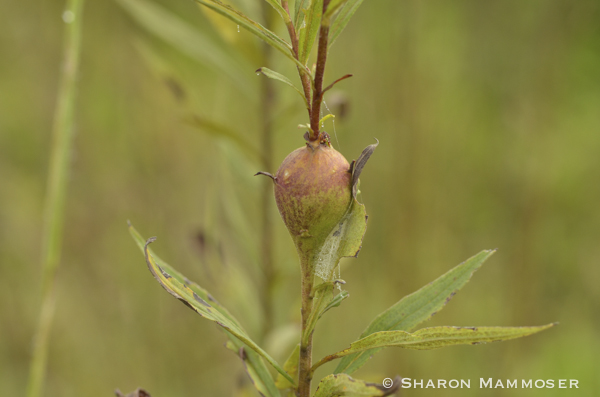
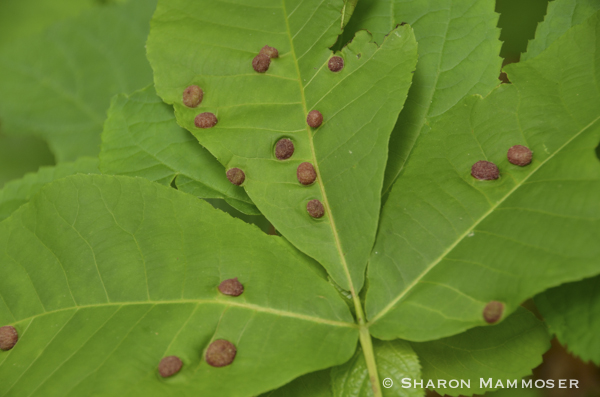
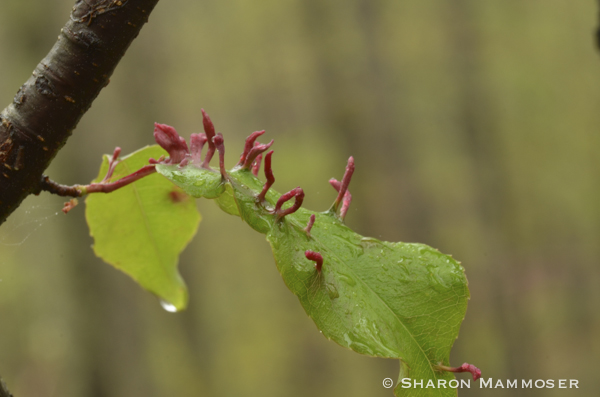
 The oak apple gall is golf-ball sized, green and a bit spongy when it first forms. Basically an adult wasp mates and then the female lays an egg in the middle of the vein of an oak leaf–especially black, scarlet or red oak trees. When the egg hatches into one larva, there is a chemical and hormone interaction which causes the oak to grow a round gall around the larva. The gall provides food and protection from predators while the larva develops. Eventually, it pupates into an adult and leaves the gall.
The oak apple gall is golf-ball sized, green and a bit spongy when it first forms. Basically an adult wasp mates and then the female lays an egg in the middle of the vein of an oak leaf–especially black, scarlet or red oak trees. When the egg hatches into one larva, there is a chemical and hormone interaction which causes the oak to grow a round gall around the larva. The gall provides food and protection from predators while the larva develops. Eventually, it pupates into an adult and leaves the gall.
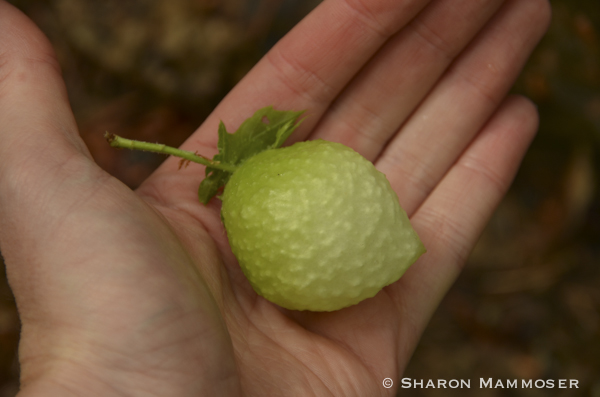
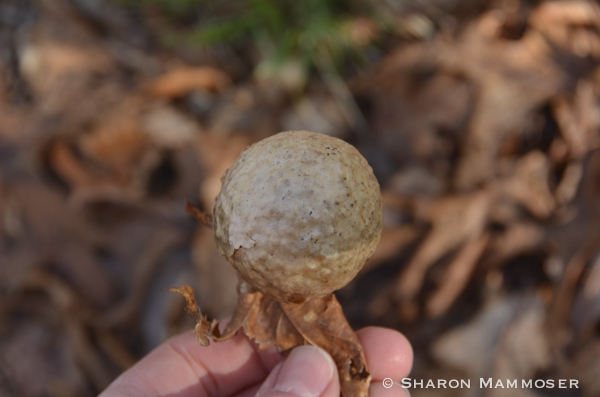
Most galls do no harm to the plant, though the leaf with the gall on it will likely fall off prematurely. There are a few that are considered serious pests for farmers, including one that attacks wheat stems and thus causes a reduction in wheat yield.
So now you know! and next time you see some odd growth on a tree leaf or stem, you can bet it’s some type of gall. Just think of how useful that information will be at the next party you attend!!
Hey, that’s it for now. Don’t forget to “spring ahead” tonight! as we all set our clocks forward one hour. The official start of spring is less than a week away!! Here’s the next puzzler–and don’t forget to add your guess to the growing number of subscribers who have qualified for the FREE prize on the first day of spring–March 20th. YOU could be a winner!
Oh, and one more thing– I want to let you know–from now on I won’t tell you in my comment about YOUR COMMENT whether or not your guess for the puzzler is correct–at least not until Saturday. Because I realized all someone has to do is read the comments at the bottom of the post and then they will know the correct answer! So you will have to tune in on Saturday to learn if your guess was correct! Hope to hear from you all soon.
Have a fabulous Saturday!

